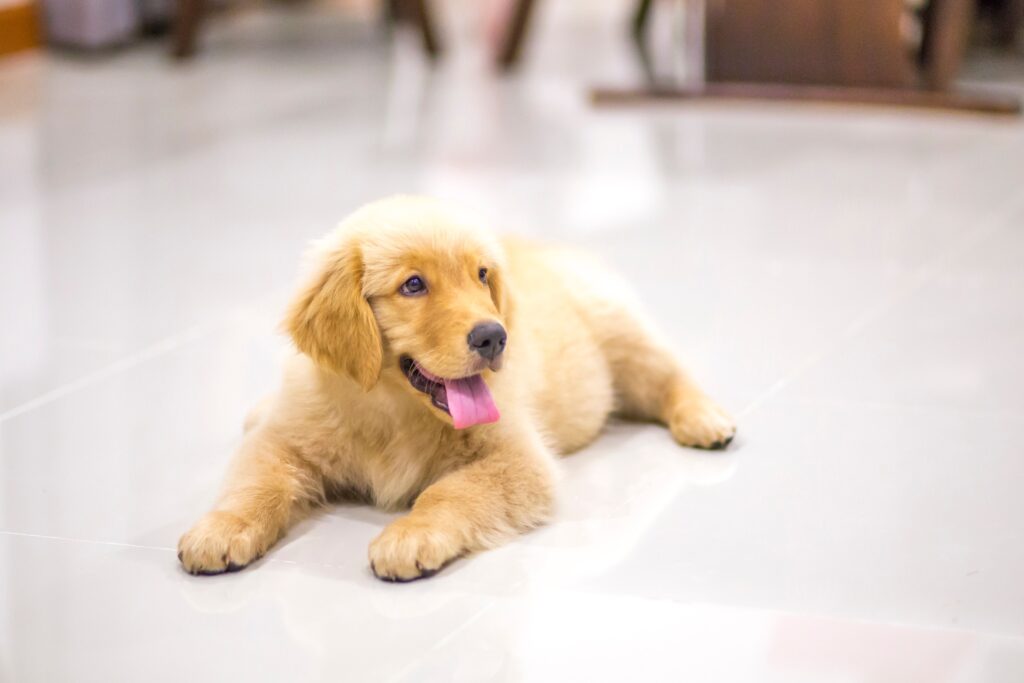Puppies are so adorable and bringing a new one home is always exciting and fun. However, this excitement starts to fade away when reality kicks in. This happens when you realize the puppy does not conform to your routines and home guidelines and you have to train them afresh. What you need to understand is that a puppy, even though previously trained, may take some time to learn your way of living. Besides, it may be dealing with the sadness of being separated from its mom and siblings.
Teaching your new young furry friend home guidelines is important in maintaining orderliness and harmony within your home. Setting boundaries, observing patience, starting early, rewarding good behavior, being clear and specific, remaining consistent, and walking with the puppy throughout the journey are some of the many ways of teaching a new pup your home guidelines. This article looks at these methods in detail.
Set Boundaries

Training your puppy to know the house rules is a great idea
Establishing home guidelines is just not enough; boundaries too come in handy. A new pup is learning and is bound to forget and fail. Establishing the different areas they are allowed and those that they are not allowed to access can also help them learn faster and more effectively. The use of baby gates can help deter the new young pet from accessing areas that you do not want them to. Containing them in a crate can also help the pet to wait for a particular routine time like self-relieving.
Observe Patience
You need to understand that apart from being very young, a new pup may need much more time to adjust to its new environment. They have just been separated from their mom and siblings so do not be surprised if they do not love and obey you instantly. Understand that accidents and relapses are inevitable at some point in the training journey.
Reward Good Behavior
Experts claim that positive reinforcement works faster and more effectively than punishments. This applies to all species, including dogs. When you reward your new pup for following your home guidelines, they will be more than happy to repeat the action. They do this to get a treat or please you. Therefore, it is important to have a treat at hand so that you can reward them for good behaviors. Since it is almost impossible to have treats all the time, you can also praise and pet them whenever they faithfully follow your established home guidelines.
Start Early
Just like babies, pups too need to be trained early. It is easier to train a new pup in your home guidelines when they are young than old. It is advisable to start new pup training the first day you get them home to avoid confusion.
Remain Adamant
The most important aspect of puppy training is to remain adamant with the home guidelines. If you are not comfortable with the pup drooling over the dining table, stick to that guideline and do not at any point change your mind down the line. Remember to use simple and specific language when home-training the pup. Use simple words like ‘sit’ when you want him to sit and ‘down’ when you want him to climb down the couch. Ensure that everyone in the family remains adamant about the home guidelines to avoid confusing the pup.
Set Priorities
This is the first thing you and your loved ones should do when you decide to bring in a new member of the family. Before you even bring him home, you need to sit down as a family and decide on what is allowed and what is not allowed. You also need to decide what areas will be off-limits and what areas he can access. Let everyone in the family contribute to setting priorities since the pup will interact with everyone. Having done that let everyone have a say on how to go about teaching the set priorities.
Correct Bad Behavior
Since accidents and relapses are a common thing with home guidelines training, it is important to correct the pup for bad behavior. For instance, if the pup tore a little piece out of the couch, tell them to stop and give them a toy to bite instead. Ensure not to correct the pup for things they did long ago, as this will only bring confusion and slow adaptation.
One may ask, what then if I did all this and it failed? Well, this is where professional dog trainers come in. They are adequately skilled and extensively trained on dog behavior and will effectively instill good manners and easily make them conform to your home guidelines.
